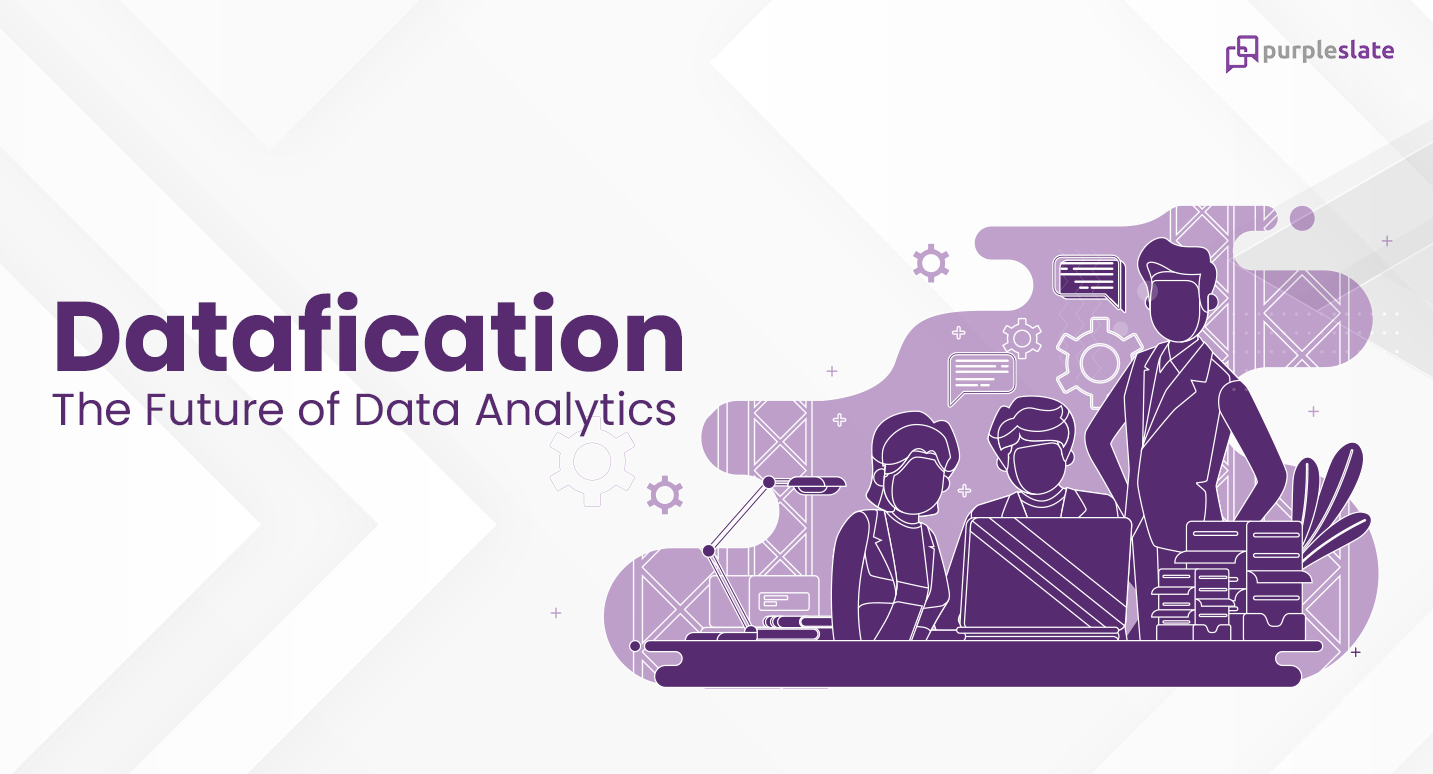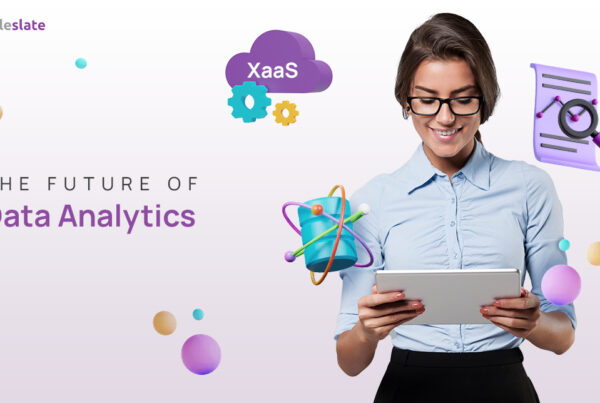
Introduction
La Casa de Papel – Does it ring a bell? Are you familiar with this word? But it is surely in the top 5 of your favorite web series. What? Yes, you may not know the OG Spanish version, but you are a big fan of its English version, Money Heist!
The Spanish version was not a blockbuster. But Netflix translated the show not just into English but also into other languages. The first two seasons went on to become one of the most-watched web series without any promotion or advertisements.
It happened because of recommendation systems that have sophisticated algorithms with the proper tags and classification and user personalization, backed up by data science and machine learning. It is a classic example of datafication.
What is Datafication?
Is that even an acceptable English word? Before, it wasn’t, but it is today.
Datafication refers to the collective tools, technologies, and processes used to transform an organization into a data-driven enterprise. An organizational trend of defining the key to core business operations through a global reliance on data and its related infrastructure.
The crux is, “Datafication” is the process of turning everything into data. It is the act of taking something that was once unquantifiable and turning it into quantitative data.
Datafication enables the transformation of business operations, behaviors, and actions, in addition to those of its clients and consumers, into quantifiable, usable, and actionable data. This information can then be tracked, processed, monitored, analyzed, and utilized to improve an organization and the products and services it offers to customers. To put them into perspective.
- Google transforms our searches into data
- Facebook transforms our friendships into data
- LinkedIn transforms our professional life into data
- Netflix or Amazon Prime transforms our watched TV shows and films into data
- Tinder transforms our dating activities into data
- Amazon transforms our shopping into data
Data either personal or commercial are used to monitor every activity within its reach. Massive datasets are stored that get updated daily by the above tech giants for datafication. Collected data is then used for personalization in the form of ads, push notifications, consumable content, and more within each tech app or platform. This level of interference is usually regulated by the law.
The Datafication of Business
Data has now become a commodity. The currency is data. To produce it, tech companies bring together platform users who create data.
Datafication is a far broader activity, taking all aspects of life and turning them into data format. Once we datafy things, we can transform their purpose and turn the information into new forms of value – Big Data article (2013) by Mayer-Schoenberger and Cukier
Manufacturing and Supply chains
It simplifies the formation of short supply chains, creating micro supply chain business processes condensed through low-cost technologies such as mobile phones.
Real estate
It has made it possible for companies to gain in-depth insights into different locations, which in turn provides a better understanding to business leaders on where is the best place to locate their business.
FinOps
Managing financial activities across an organization is known as financial operations management (FinOps). Datafication is crucial because it enables the analysis and integration of data that was previously isolated in many systems. For example, datafication strives to bring together Accounts Receivable and Accounts Payable systems together to get a single view.
Human resources
Employers can identify potential employees and their unique traits, such as their risk-taking profiles and personalities, using mobile phones, apps, and social network data. Instead of depending on obsolete personality assessments or tests that gauge analytical thinking, it will replace existing exam providers.
Customer relationship management
Many businesses are using datafication to better understand their customers and develop applicable triggers based on their personalities and habits. This information is derived from the vocabulary and tone used in emails, phone calls, and social media.
AIOps
The phrase “AI-as-a-service” (AIOps) is used to describe how AI tools are employed in businesses. Another advanced technology that applies datafication to its domain is this one. Datafication combines a variety of AI tools and is cloud-based to deliver real-time data, insights, and measurements on nearly everything. You can use a web browser or a mobile device to access it.
Benefits of Datafication
Datafication offers enormous opportunities for improving business processes, making it a strategy that is financially advantageous to implement. Datafication is a new developing approach as well as a methodology for building a secure and innovative framework for the future.
1. Actionable Insights
Datafication converts unstructured, incomprehensible data into usable insights, allowing you to get insight into your processes and procedures – the basis of any organization.
What do you do well? What needs to be improved? Conversely, what is working well but may be improved? Datafication implies that you will be more capable of understanding your company’s strengths, limitations, potential, and prospects. Also, it provides you with insight into the outcomes and ramifications of your projects, enabling you to assess what you’re doing and how you’re doing it.
2. Digital Transformation
Digital transformation is no longer a fleeting fad; it is becoming increasingly crucial for all businesses that want to stay up-to-date and pertinent in an ever-changing ecosystem.
To take advantage of the latest and most cutting-edge technologies you should have usable data. It is the ticket to improving business processes and efficiency. It will help you to understand where the organization stands and the required next steps to move forward.
3. Improve Productivity and Efficiency
Datafication will comprehend what you’re doing and how you’re doing it better. Streamlining operations will make better use of all available resources, including employees, to boost overall production and efficiency and, as a result, transform your business into a successful enterprise.
4. Manage Information
Any business is generating a large amount of data and it is being collected and stored every day. If the data is managed well, it shall be providing better results. Otherwise, it can be overwhelming or can become unused data.
Datafication guarantees that you organize it appropriately, allowing you to properly use data to make decisions. You will not only be able to store data but also access and interpret it. Many businesses are experimenting with integrating user-sourced data and incorporating it into apps to contextualize the customer experience.
Conclusion
We know where you are. We know where you’ve been. We can more or less know what you’re thinking about – Erik Schmidt
The concept of datafication may be scary, but properly handled datasets with proper law regulations, security measures, and professional ethics could bring companies to provide customer-friendly and personalized services with the data collected. As datafication becomes more common it is driving innovation, breakthroughs, and betterment for the greater good.
One of the core elements to achieving datafication is by democratizing data access. Ensuring the last line of employees is empowered to access insights can build a data-driven culture that can act as a precursor for setting organizations on the path to datafication. Which brings us to the question, how does one democratize data access?
The shortest answer will be to break the technical barriers surrounding it by introducing language as an interface between data and the user. Or simply engaging in meaningful conversations with data.
Is it possible? With the advancements that have happened around NLP, it’s very much possible. Listen to our webinar on how business intelligence can be reimagined using Conversational AI Services.




